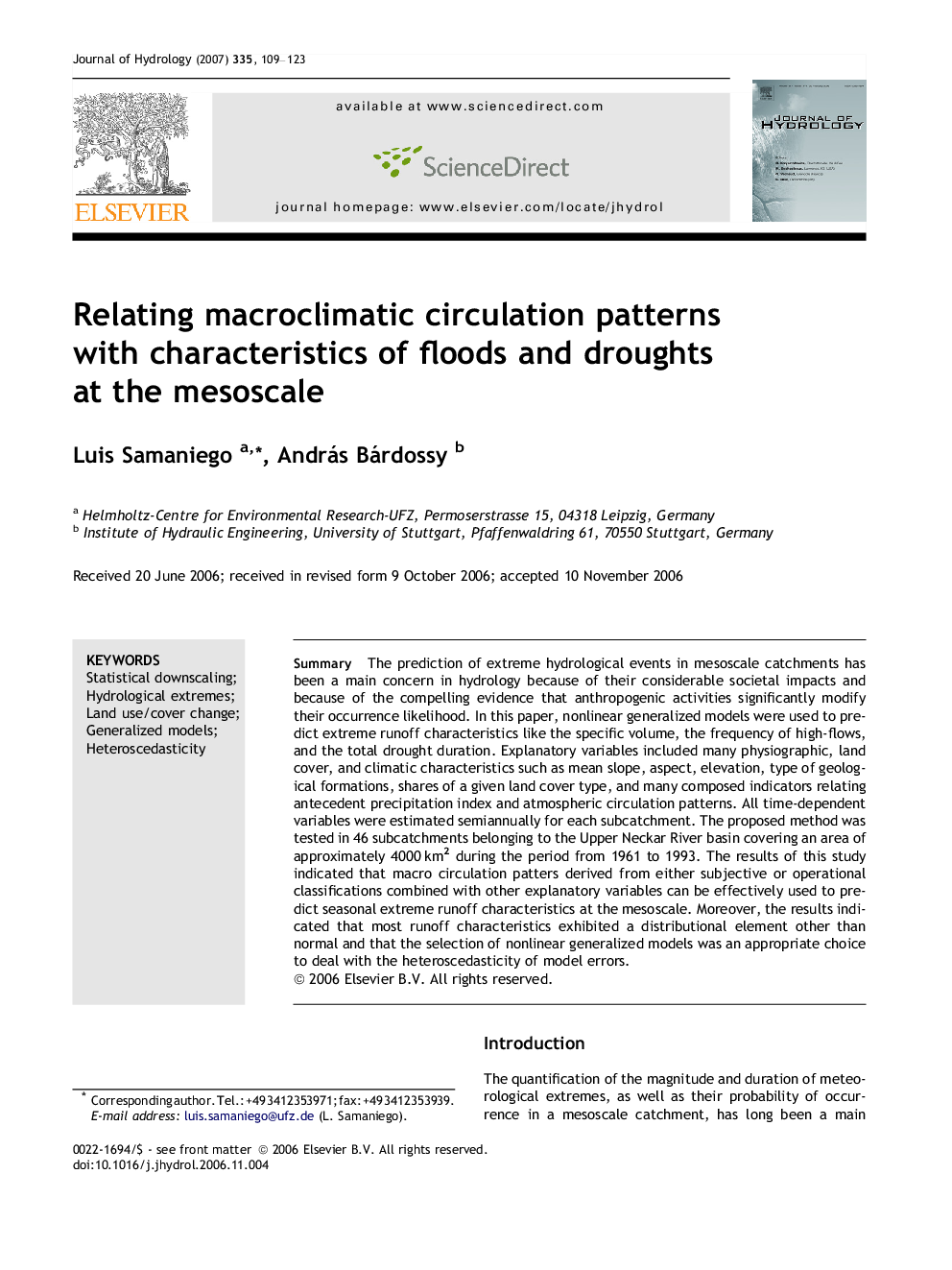| Article ID | Journal | Published Year | Pages | File Type |
|---|---|---|---|---|
| 4579895 | Journal of Hydrology | 2007 | 15 Pages |
SummaryThe prediction of extreme hydrological events in mesoscale catchments has been a main concern in hydrology because of their considerable societal impacts and because of the compelling evidence that anthropogenic activities significantly modify their occurrence likelihood. In this paper, nonlinear generalized models were used to predict extreme runoff characteristics like the specific volume, the frequency of high-flows, and the total drought duration. Explanatory variables included many physiographic, land cover, and climatic characteristics such as mean slope, aspect, elevation, type of geological formations, shares of a given land cover type, and many composed indicators relating antecedent precipitation index and atmospheric circulation patterns. All time-dependent variables were estimated semiannually for each subcatchment. The proposed method was tested in 46 subcatchments belonging to the Upper Neckar River basin covering an area of approximately 4000 km2 during the period from 1961 to 1993. The results of this study indicated that macro circulation patters derived from either subjective or operational classifications combined with other explanatory variables can be effectively used to predict seasonal extreme runoff characteristics at the mesoscale. Moreover, the results indicated that most runoff characteristics exhibited a distributional element other than normal and that the selection of nonlinear generalized models was an appropriate choice to deal with the heteroscedasticity of model errors.
